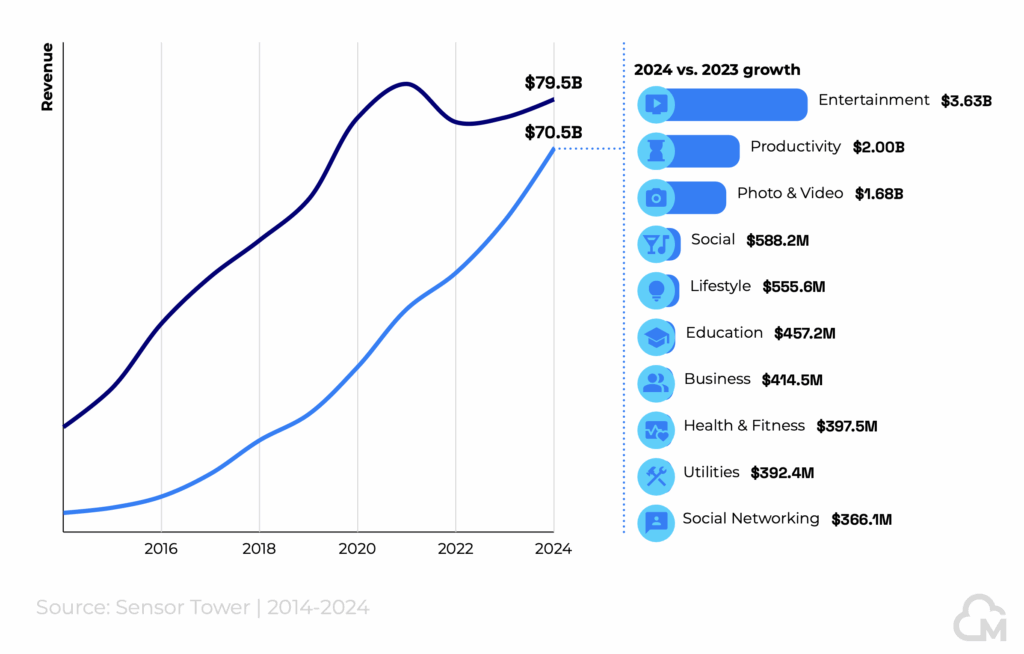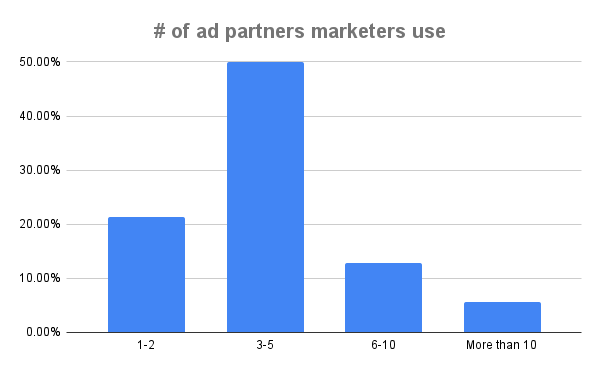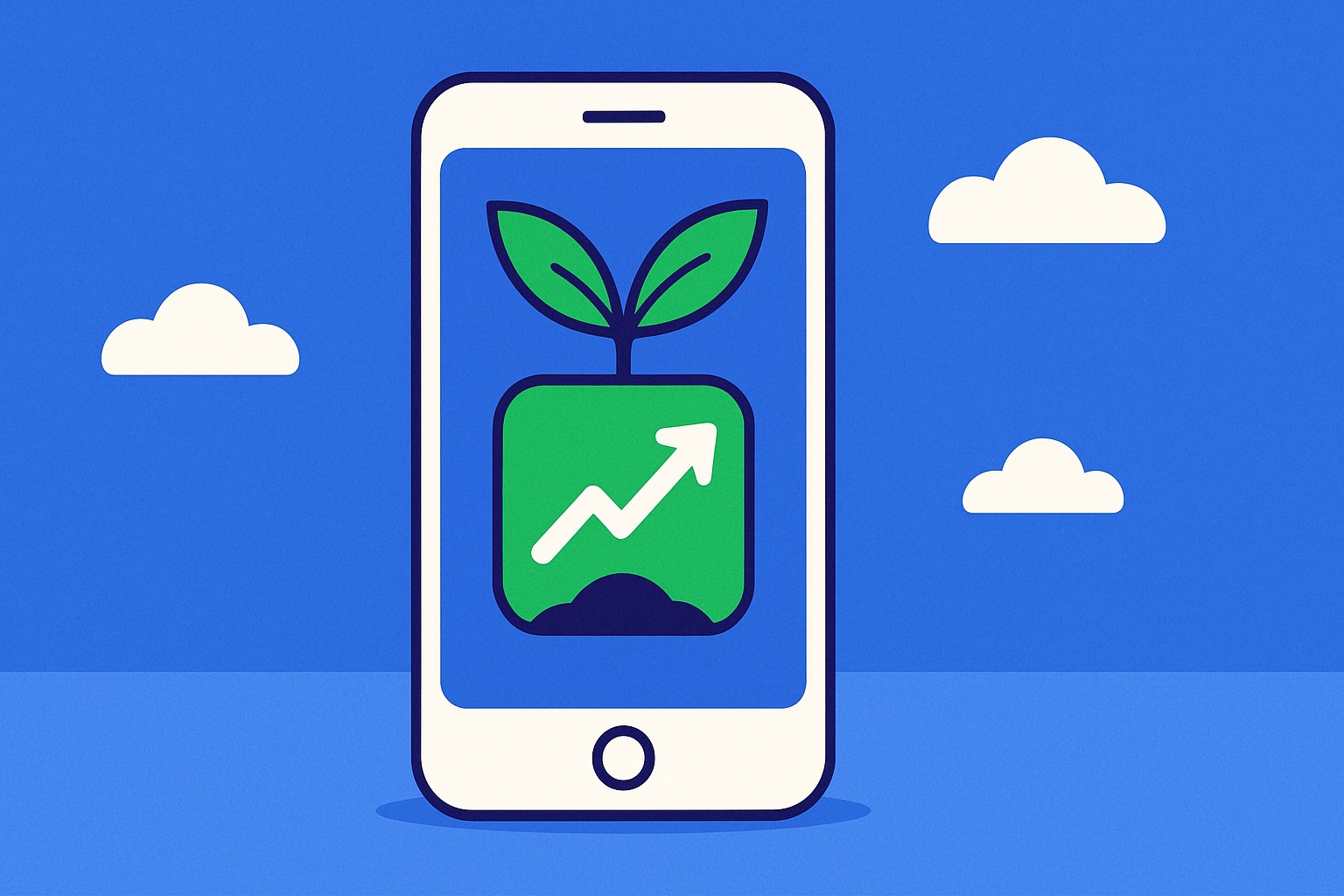Content
Stay up to date on the latest happenings in digital marketing
You’re starting a new app. You want to advertise it. You go grab yourself an ad account at Meta and Google, and maybe Apple Ads. But did you just do something that will actually hinder your app growth journey?
Look, I get it.
No-one ever got fired for choosing IBM, they said back in the 1970s.
And today, if you’re looking for massive app growth, you’re going to use Meta, which has incredible data and targeting. You’re going to use Google, which has immense reach. And you’re probably going to use Apple Ads, if iOS matters to you, because it’s so freakishly effective.
There’s a reason these giants are always leaders in the Singular ROI Index.
But … there’s a but. Think about it:
- Independent apps now match TikTok + Instagram in user reach with more than 2 billion DAU
(there’s a whole ecosystem in those indies) - 88% of app growth ad spend remains locked in Google and Meta
(but so many app growth marketers don’t see it) - Diversifying ad spend beyond the big walled gardens delivers up to 214% ROAS lift
(those who do … win)
If you’re just spending on the big platforms, the math doesn’t math. It doesn’t make sense.
Something needs to change.
That’s what we looked at in a recent data-driven report with Moloco and SensorTower. We focused mostly on consumer apps as opposed to games, and we saw that the consumer app economy is booming. Last year IAP and subscription revenues surged 25% to hit $70.5 billion, meaning consumer apps are on track to overtake gaming revenue for the first time in history.

Entertainment — think streaming media — and productivity and photo/video apps have driven the lion’s share of the increase, with a massive $7.31 billion in combined incremental revenue growth.
But while user engagement has diversified and monetization has exploded, most app growth strategies haven’t updated to match the new reality. Almost 90% of consumer app ad spend is still locked to just 2 platforms: Google and Meta.
The data says that’s a bad budgeting decision.
App growth explosion when you diversify ad spend
To build this report with Moloco and SensorTower, we conducted a meta-analysis of over 2,000 apps.
The goal: compare apps that concentrate 80%+ of their ad spend on Google and Meta with those that diversify across other channels, including the independent app ecosystem.
The results were pretty clear: an average 48% lift in Day 30 ROAS across all verticals. Some verticals were much higher:
- 116% lift for consumer apps
- 214% lift for shopping apps
- 159% lift for health & fitness
- 143% lift for education
Interestingly, when games allocate their ad spend, they send 35% to the wider app ecosystem, while still funneling about 30% to each of Google and Meta. Consumer apps, however, send only 34% as much of their overall spend to independent apps. In other words, they over-index on the big platforms.
And according to this data, that’s costing them billions of dollars.
It’s a clear signal that consumer app growth is accelerating in the Independent App Ecosystem. That’s where sustainable, measurable scale is coming from.
– Stephanie Pilon, CMO, Singular
The conclusion is pretty obvious: channel diversification is essential, not just for reach but for relevance and context. And many conversions are now coming from unexpected app categories: shopping users converting in games, travel bookers being found in productivity apps, and finance users clicking on ads in weather or news apps.
There’s easy and there’s effective
There’s a reason the walled gardens do so well. They have mass behavioral data on billions of humans. That’s hard to beat.
But here’s the deal: you pay for that. You pay bigtime.
Winning the app growth battle includes achieving a CPI that’s less than LTV, CAC that’s less than customer lifetime value. When you pay more upfront for new users, subscribers, or customers, you need to make more on the backend.
Plus it slows down your cash recycling time — invest in UA, recoup in monetization, re-invest in UA — thanks to the larger sums on both sides of the equation.
And that slows your overall growth rate.
App growth via diversification
Most app marketers keep the number of their ad partners low. Maybe 70% use fewer than 6 ad partners.

It makes sense, from a perspective:
- Fewer relationships to manage
- Fewer dashboards to learn
- Fewer hassles
Also, if you’ve got to spend money training ad networks on new campaigns and creative, there’s potentially more waste across more ad networks.
But using 6 or more ad networks has some major positive impact:
- Higher ROI
- Lower CPI
- Similar retention for games
- Better retention for consumer apps … in fact 74% better
In some verticals the difference is startling: almost a 3X jump in ROI for on-demand verticals like ride-hailing, delivery, and food.
So what do you do?
Well, get an MMP if you don’t have 1 yet.
With an MMP, managing more ad partners is vastly simplified: a single trustworthy dashboard, simple onboarding, integrated reporting. There’s value, frankly, even if you just use 1 ad network. But that value expands exponentially as you grow your channel diversity and ad partnerships.
High-value users don’t stay in one kind of app.
Online shoppers and e-commerce users over-index on news and casino games. Fintech users often engage with travel and sports apps.
So with an MMP you can scale ad partners easier. And, with a diversified user acquisition strategy you can get those high-value users and customers in multiple places. You can get them cheaper, too. And once you get them, they are more valuable.
Which, really, is what the app growth game is all about.
Check out the full report right here …



